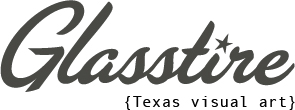Raised in Houston’s Second Ward, Hunter College alumna Ana Villagomez opens her first solo show in New York with a showcase of all the detours her well-defined method allows the artist to make. There are personal memories of her community’s dexterity and inventiveness, renovation, and repair around the family home and the street. But hers are not the paintings that evoke (domestic) labor; if anything, they transcend it.
No two paintings among the ten are alike, and every one of them captures the gaze in ways that are very rare for recent abstraction. One reason for this effect is that Villagomez doesn’t use brushes much, layering Flashe and acrylic until the overall effect is of an unfinished restoration-slash-paint job in a palazzo. Trying to reconstruct the order of the layers, you are pulled deeper and deeper into a game of “Whose will is this?” Who is the artist responsible for the red mountain against a rusty brown background in Subterranean Tremors? And the black glossy squiggles on top of that layer, why do they feel prehistoric in their hard-edged finality? Who painted the white border around both layers? Someone who wanted to contain the energy of the triangle and the squiggles? Or someone who was defeated in their calls to order? This coexistence of vectors gives her work a character of a physically solid object, devoid of individual expression, that lets you recognize the person behind the canvas by the painterly gestures. Any given Villagomez painting contains a multitude of individual agencies while preserving coherence through a complex rhythm of shapes and colors. All the while — and this is the artist’s biggest secret — they don’t look or feel unfinished. It’s as if there is a certain level of complexity that holds the work together just by being sufficiently architectonic. A crumpled pile of designer clothes can be more scenic than a person wearing them. Similar to this, the inspired chaos of contours and grids in a Villagomez painting suddenly appears more meaningful than any straightforward depiction of structural or narrative logic.
In contrast to her first solo show at the Houston gallery Josh Pazda Hiram Butler a year ago, Villagomez works on a bigger scale. An increase in size leads to the paintings hinting at more subject matter, even if they still do not coalesce into a story. It is almost too easy to discern a distressed ship in Most Distant Visible Part of the Sea, populated by three Picasso-esque figures facing left. Cartoon animals seem to be written into other paintings, even if we’re constantly aware that the effect is random. For the artist herself, the larger the works are, the more personal and environmental at the same time: “I get to walk over them and use bigger tools that have sentimental value.”
With so many themes and variations going on at once, Villagomez feels the need to recover a personal connection to the work. Sometimes a thin red line slaloms through the layers, alternately string-like or geometrical. The line ties the paintings back to the artist: “My dad was a member of the Rosicrucian Order in the nineties and would always talk to me about the tethers, strings, and chords that we keep in order to attach our physical body to our astral one. I see painting as one of the few things I can do that makes me feel “in my body,” and when I started adding these red strings as a way of addressing my ties to it.” For the viewer, the line represents a ball of string that leads Theseus out of the labyrinth, giving direction through the temporal layers of the paintings and animating the eyeballs.
This movement never subsides, and in one particular work gets streamlined in a novel way. Armed with a mantra of “embrace your restless energy,” Ana Villagomez painted her show’s outlier, Moonshake, with electric blues and lightning yellows. The title comes from a track off of Can’s Future Days, an unsurpassed masterpiece of five open minds jamming together until the grooves they fall into are inimitable. “I understand Moonshake the least, but, funnily enough, I feel that it understands me best,” says the artist, and that’s what this viewer also senses. This painting instructs us in the ways that her other pieces work. The forms are similar, as they, in fact, reappear in a different painting. But their unsteady communion creates a sensation of newness and a jolt of zigzagging dance that is rarely as explicit in other Villagomez paintings. Moonshake, moreover, dispenses with melancholy that is always brooding under layers of glossy paint.
Now and then before a Villagomez painting, you’re touched by the chaotic, tactile darkness of swooshing color that resemble underpainting but sometimes are not even the first of many layers. These parts have the evocative energy of a partially destroyed fresco in an Italian chapel bombed by well-meaning allies in 1944. It’s an effect of patina that lets you project gaseous shapes and volumes into what remains, invariably, open-ended. Other gestures that imply logic and narrative are just as deceptive. Lake in My Brain has the inviting structure of a science illustration, with the red line forming a rectangle that looks like an inset with zoomed-in details of a larger square painting underneath. But instead of a call-back or a simplification, we are faced with another fragmented outline, organic and messy as a blurry snapshot of a jungle. Everything is on the move, all that is solid grows out in wild parabolas, and the restoration is never finished.
Ana Villagomez: Shadow Haggler is on view at Nino Mier Gallery, New York, through August 9, 2024.





